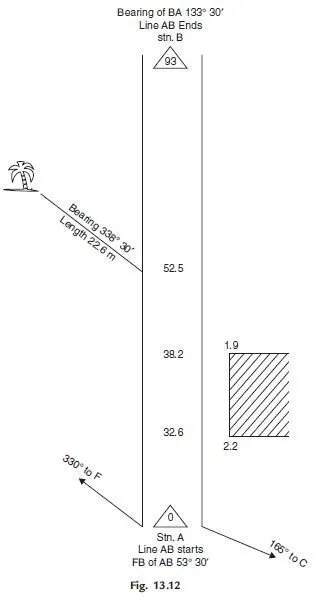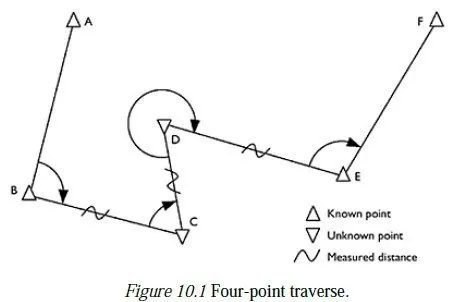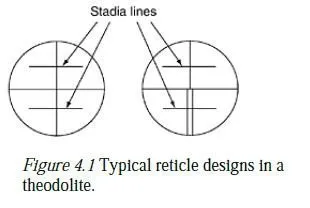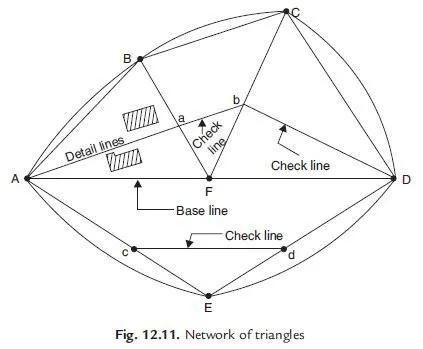In compass survey chain or tape is used for linear measurement. If the surveying starts from a station, goes round an area and ends at the starting station it is called closed traverse. If survey starts from a point, goes along a number of interconnected lines and ends at some other point it is called as open traverse. Closed traverse is used for preparing plan of an area while open traverse is useful in the road, rail or canal projects. The following are required for chain and compass survey:
(i) Compass and stand
(ii) Chain and tape
(iii) 10 arrows
(iv) 5 to 6 ranging rods
(v) Ranging poles
(vi) Pegs and hammer
(vii) Plumb bobs
(viii) Line ranger, cross staff etc.
Field Work
Field work involves:
(i) reconnaissance survey
(ii) preparation of location sketches of stations
(iii) measurement of directions
(iv) measurement of lengths and offsets, and
(v) recording measurements.
(i) Reconnaissance Survey: The entire area to be surveyed is inspected to select survey stations.
Important points to be considered in selecting stations are:
(a) Adjacent stations should be intervisible.
(b) Lines to be chained should be free of obstacles.
(c) Number of survey lines should be minimum.
(d) Survey lines should run close to the important objects, so that offset lengths are small.
An index map is prepared with pencil and stations are marked. If necessary, changes may be
made in survey lines and corresponding changes in the index plan.
Location Sketches
Before commencing surveying a line, the location sketches of the stations of that line should be prepared.
At the beginning of the field book few pages should be reserved for drawing location sketches.
Direction Measurement
The following precautions should be taken in measuring the direction of a survey line with compass.
(a) Centre the compass on the station correctly.
(b) Level the compass and ensure needle is free to move.
(c) Take the reading only after vibration of graduation circle/needle is stopped. Use the knob, if necessary.
(d) Gently tap the top of the glass of compass to remove sluggishness of the needle and take the reading after vibration stops.
(e) While taking reading parallax should be avoided.
(f) Care should be taken to keep away steel and iron objects like key bunch, metal framed spectacles, iron buttons, chain, arrows etc.
(g) If handkerchief is used to clean top of glass of campass, the glass is charged with electricity.
As a result of it local attraction is induced. To avoid this problem apply moist fingers to clean the glass.
(h) If the compass is not in use, fold the prism and object vane on the top of glass plate, so that needle is lifted from the pivot to avoid unnecessary wear of the pivot.
(i) For all survey lines fore bearings and back bearings should be taken. If any other survey station is visible, bearing should be taken to that station also, which helps in checking survey work.
Measurement of Lengths and Offsets
This is similar to the one used in chain survey. However, it may be noted that for the objects of less importance one can measure the bearing of the offset and its length.
Recording Chain and Compass Measurements
The type of field book used in chain survey is used in this survey also. Apart from recording linear measurements in this survey the bearings taken also should be recorded. Figure 13.12 shows a page of typical field record.





aw sum
Very Useful for new learners in Civil Engg